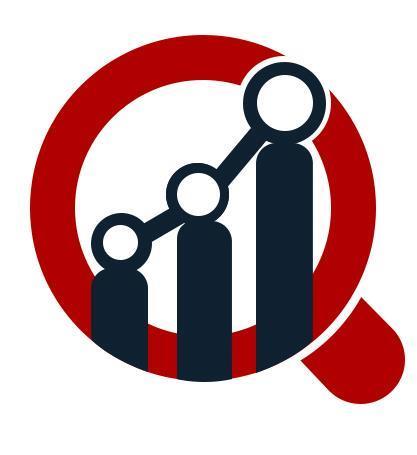Germany Electrolyser Market: A Comprehensive Overview
The Germany electrolyser market is experiencing significant growth, driven by the country's commitment to transitioning to a hydrogen-based economy. Electrolysers, devices that split water into hydrogen and oxygen using electricity, are central to producing green hydrogen—a key component in Germany’s strategy to achieve carbon neutrality by 2045. This article delves into the market's current landscape, key drivers, technological advancements, challenges, and future prospects.
Market Landscape
Germany's electrolyser market is characterized by a mix of domestic and international players, ranging from established industrial giants to innovative startups. The market is supported by strong government policies, substantial investments, and a robust research and development ecosystem. Key players in the market include Siemens Energy, Thyssenkrupp, Linde, and ITM Power, each contributing to the development and deployment of advanced electrolyser technologies.
Key Drivers
Several factors are propelling the growth of the electrolyser market in Germany:
- Government Policies and Initiatives: The German government has launched several initiatives to support hydrogen production and utilization. The National Hydrogen Strategy, unveiled in 2020, outlines the country's vision for becoming a global leader in hydrogen technologies. The strategy includes substantial funding for research, development, and deployment of hydrogen infrastructure, with a particular focus on green hydrogen.
- Renewable Energy Integration: Germany’s commitment to renewable energy sources, such as wind and solar, aligns well with the production of green hydrogen. Electrolysers can utilize surplus renewable energy to produce hydrogen, thereby addressing the intermittency issues associated with renewables and enhancing energy security.
- Industrial Demand: The industrial sector in Germany, particularly steel and chemical manufacturing, is a significant consumer of hydrogen. The shift towards decarbonization is driving these industries to adopt green hydrogen as a cleaner alternative to fossil fuels, thereby boosting the demand for electrolysers.
- Technological Advancements: Continuous advancements in electrolyser technology are improving efficiency, reducing costs, and enhancing scalability. Innovations such as proton exchange membrane (PEM) electrolysers and solid oxide electrolysers (SOE) are gaining traction, offering higher efficiencies and operational flexibility.
Technological Advancements
Technological innovation is a cornerstone of the Germany electrolyser market. Recent advancements include:
- PEM Electrolysers: These electrolysers are known for their high efficiency, rapid response times, and suitability for integration with renewable energy sources. Companies like Siemens Energy are at the forefront of developing and deploying PEM electrolysers.
- Solid Oxide Electrolysers (SOE): SOEs operate at high temperatures, offering high efficiency and the potential to utilize waste heat from industrial processes. Thyssenkrupp is actively involved in the development of SOE technology, aiming to enhance its commercial viability.
- Alkaline Electrolysers: Traditional alkaline electrolysers continue to be widely used due to their robustness and cost-effectiveness. Ongoing improvements in materials and design are enhancing their performance and reducing operational costs.
Challenges
Despite the positive outlook, the Germany electrolyser market faces several challenges:
- High Costs: The production of green hydrogen via electrolysis is currently more expensive than hydrogen produced from fossil fuels. Reducing the cost of electrolysers and making green hydrogen competitive remains a critical challenge.
- Infrastructure Development: Building a comprehensive hydrogen infrastructure, including storage, distribution, and refueling stations, requires substantial investment and coordinated efforts. The existing infrastructure needs significant upgrades to support large-scale hydrogen adoption.
- Regulatory Hurdles: Navigating the complex regulatory landscape and ensuring compliance with safety and environmental standards can be challenging for market participants. Clear and consistent regulations are essential to facilitate market growth.
Future Prospects
The future of the Germany electrolyser market looks promising, with several developments on the horizon:
- Scaling Up Production: Companies are scaling up electrolyser production to meet growing demand. Large-scale projects, such as the Gigawatt Electrolyser Project by Siemens Energy and Thyssenkrupp, aim to significantly increase production capacity.
- International Collaborations: Germany is actively seeking international collaborations to enhance its hydrogen capabilities. Partnerships with countries like Norway, Australia, and Canada are focused on securing hydrogen imports and technology exchange.
- Research and Innovation: Ongoing research and innovation efforts are expected to yield breakthroughs in electrolyser technology, further improving efficiency and reducing costs. The establishment of hydrogen innovation hubs across Germany will foster collaboration and accelerate technological advancements.
Conclusion
The Germany electrolyser market is poised for substantial growth, driven by supportive government policies, increasing industrial demand, and continuous technological advancements. While challenges remain, the commitment to a sustainable hydrogen economy and the concerted efforts of industry stakeholders are set to propel the market forward. As Germany continues to lead in hydrogen innovation, the electrolyser market will play a pivotal role in achieving the country’s climate goals and establishing a sustainable energy future.
More
Trending Reports:
Biomechanical energy
harvesting





Comments